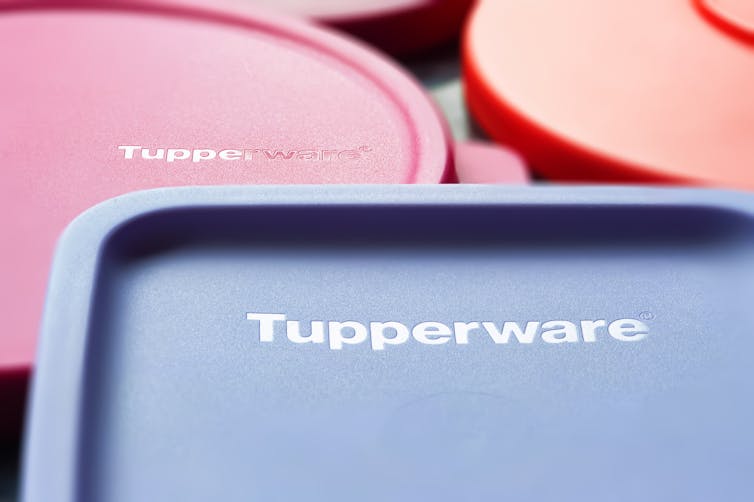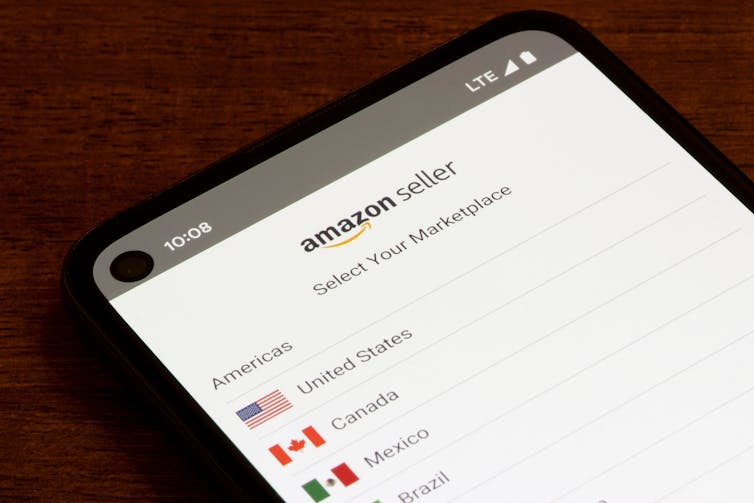Source: The Conversation (Au and NZ) – By Andrew Hughes, Lecturer in Marketing, Research School of Management, Australian National University
Tupperware is one of the few iconic brands with which nearly every Australian has come into contact at some stage.
Some, like me, will have grown up watching their mums host “Tupperware parties” for their friends on the weekend. Others used the unmistakably colourful containers to carry their lunches to work or produce microwave meals of marvel.
So what could have gone so badly wrong that the company has now filed for bankruptcy in the United States?
Tupperware is one of the world’s most famous proponents of a business model called “multi-level marketing”. But its model came under serious new pressures in the digital age.
The company’s own chief restructuring officer perhaps summed it up best, writing in a bankruptcy court filing:
Nearly everyone now knows what Tupperware is, but fewer people know where to find it.
So what exactly is multi-level marketing? And what lessons could the demise of Tupperware hold for the sector more broadly?
What is multi-level marketing?
As a traditional multi-level marketing business, you don’t put your wares up for sale on supermarket or department store shelves.
Instead, you recruit salespeople who sell your products to individuals, earning commission on how much they sell rather than a salary.
But that’s typically not they only way they can earn money. There are also financial incentives for recruiting new salespeople, which can move them up the ranks at the company. Hence the term multi-level marketing, or MLM.

Tupperware Corporation, Public Domain, via Wikimedia Commons
This method of marketing had several advantages when it emerged.
The people at the lowest level could see the incentives received by those above them, helping keep both engagement and attitudes towards the brand high. Many MLM brands still host massive award events, celebrating their biggest and best earners.
For customers, it was a thrill to be invited to a party, to feel part of the inner circle of someone’s friends. You could hang out, socialise, and perhaps drop some money on helping a friend out.
For the brand, this meant a ready-made customer base and network for product distribution.
An MLM brand could also avoid some of the larger overheads, such as rent and wages, that can cripple a traditional retail model when times become tough. Sounds perfect, right?
Read more:
Thinking of joining a multi-level marketing scheme or MLM as your side hustle? Read this first
A business model under pressure
Recently, a range of macroeconomic and cultural factors have slowly eroded the sales and profitability of some of the biggest players in the MLM sector.
Tupperware’s troubles have been brewing for years. The company had not seen an increase in sales since the third quarter of 2021, and in 2023 it had to urgently restructure its debt to keep itself solvent.
Before the bankruptcy announcement, shares in the company (listed on the New York Stock Exchange) had already fallen by about 75% in 2024 alone.
Back in August, another large MLM, perfume and cosmetics giant Avon, also filed for bankruptcy. While a “deluge” of lawsuits was the acute cause, Avon’s model of direct selling had also been under pressure for years.

Oleksiichik/Shutterstock
What happened?
Times, people and culture all change. Many of the early MLMs like Tupperware and Avon established themselves and thrived most in an era that’s now long gone.
Far fewer women were in full-time work, so were at home. The success stories provided hope and networking in what was in reality a tough and lonely time of bringing up children in suburban Australia in the mid- to late 20th century.
Rates of full-time employment for women have surged since then, meaning many of these brands have also had to adjust their strategy.
Avon acknowledged this in late 2023, when it announced a plan to open its first ever physical stores in the UK. The company had faced consistently declining sales over the past decade.
The then chief executive Angela Cretu said:
Women stayed at home in the past, but now they are going out to work and we have to follow them wherever they spend their time and make the service as convenient as possible.
Failure to reposition the brand
Culture has changed, too. Asking your friends around to make your life better, at their expense, now might not seem like a party for anyone but the person receiving the money.
Tupperware may have been the safe container for your lunch, but it was also your mum’s brand. It had a retro feel, but not necessarily a cool factor.
It may also have been a victim of its own success. The warranty program to replace lids free of charge – for a product whose lids are easily lost or broken – was one of the most consumer-friendly marketing programs I’ve ever heard of.
But as a marketing strategy amid floundering sales, it meant many people didn’t need to buy a new container, and therefore didn’t need to consider the brand’s newer offerings.
A flood of cheaper offerings from competitors, incredibly similar in design, have also been a drag on the brand.
In 2022, after decades of direct selling, Tupperware made a radical change and put its products on shelves in Target in the US. That may have been too little, too late.
New ‘side hustles’ in the digital age
Tupperware, like many MLMs, was not suited to the digital changes we’ve seen in the last decade. At the same time, a new generation of “side hustles” have emerged and thrived – but importantly, online.
In contrast with the MLM model, platforms such as Amazon or Etsy here allow someone to have their own virtual store, potentially giving them higher earnings at an earlier stage.
They may still have levels, but are more similar to franchises than part of a tier-based system. We are now more likely to hear words such as “affiliate”, “collaborator” and “partner” to describe people in online marketplaces.

Tada Images/Shutterstock
Yet many of the traditional MLMs remain. The strong brand connection they have with some of us is the envy of the modern marketer. Some will make this leap to the generations coming through. Some won’t.
Why? Adaptation and knowing the market. Good marketing boils down to knowing your people well. Who they really are and what culture influences them.
At any rate, Tupperware will probably always hold a special place in the hearts of many. Or at least their cupboards.
![]()
Andrew Hughes does not work for, consult, own shares in or receive funding from any company or organisation that would benefit from this article, and has disclosed no relevant affiliations beyond their academic appointment.
– ref. Tupperware has filed for bankruptcy – is multi-level marketing in trouble? – https://theconversation.com/tupperware-has-filed-for-bankruptcy-is-multi-level-marketing-in-trouble-239387








